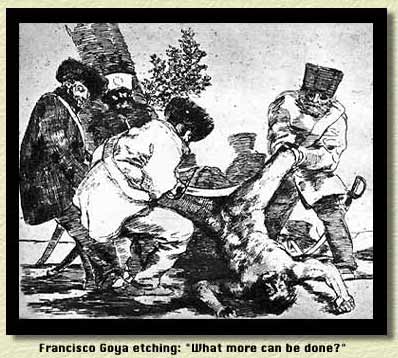Sophy Joseph
“There should be maximum punishment to the rapists, death penalty or castration”

The debate on ‘castration as punishment for rape’ got populist attention and even given consideration to be included in criminal justice reforms by the ruling party. The moment the debate on ‘castration’ gathered attention in India, it was criticized for bringing back medieval notions of justice. This statement that castration is a medieval form of punishment requires more analysis. This article is an attempt to bring a historical perspective to the debate and argue against the historical insensitivity the debate has generated in recent times.
The Indian Vedic texts such as Dharma Shastras, believed to be codified by Manu in 2nd or 3rd Century A.D., and Dharma Sutras talk about castration as a form of punishment for sexual offences, on a highly discriminatory basis. The first three classes in the Varna system, the Brahmins, Kshatriyas and Vaishyas are called as twice born, i.e, born again with the sacred thread. The highly inequalitarian system adjudicated crimes with reference to varna of the victim and the accused. The lower the varna of the perpetrator, the more severe the punishment was and the higher the varna of the victim, the more severe the punishment on the perpetrator. Only ‘sudras’, lowest in the hierarchy of varna, were subjected to castration as per the law codified in the religious texts. The justification for ill-treatment of sudras was the stigma attached to them as wrong-doers in their previous birth and hence deserving of sub-human levels of existence. It was believed that in the evolutionary process of liberation, man reaps what he sows, or karma. This notion was reinforced through association of justice administration with the varna stratification.
According to Dharma Shastras and Dharma Sutras, castration was imposed as punishment for crimes such as adultery and rape. The Gautama Dharmasutra (12.2) and Manusmriti (8.374) accords punishment of castration on a Sudra who has intercourse with a woman of a highervarna. The Narada Smriti (12.72-74) goes to the extent of prescribing castration as the punishment of rape for any one belonging to non-Brahmin caste for polluting woman of Brahmin caste. While Sudras were punished with forcible castration by law, the Brahmin was allowed voluntary castration, that too only if he has intercourse with the wife of his guru or an elderly woman. The stratification in criminal justice system in ancient India, based on vertical hierarchy in terms of caste and occupation, was clearly seen in respect of sexual offences also.
This is where we need to challenge our historical insensibility for blaming castration as a punishment imposed in medieval period by muslim foreign invaders. It existed and was practiced, through history, in India in a more prejudiced manner against the downtrodden. In this context, the ‘knee-jerk’ argument for castration as a punishment for rape requires reconsideration as it tends to hold again the baggage of division in society, both in terms of caste and gender. The concern today may not be whether castration is ancient or medieval or modern, but as a deterrent punishment for rape. It is not only sexual urge that leads to rape; it is also intertwined with various factors such as power, violence and economic disparity or incapacity. While it is well received that castration has not decreased sex crimes at all, the revival of discriminatory legacy in punishment system is irrational in the twenty first century.

The available ancient literature firms up the argument that castration existed as a form of punishment for centuries for sexual crimes in different parts of the world. In Greek and Roman mythology, Attis, the male partner of Cybele, the goddess of fertility, castrated himself and this paved the way for ritual castration by a group or cult known as the Galli. Though Greece disowned ritual castration later, but slaves were punished with castration and even for commercial purposes. In Judaism, it is believed that a man without testicles may not go to heaven. So, the sexual offenders were punished with castration to oust them from heaven. One can find references in Jewish religious texts such as Deuteronomy 23: 1, Leviticus 21: 20, and 22: 24. Christianity and Islam preached that the ‘wages of sin is death’ and this paved the way for adoption of retributive punishment system and adoption of castration as punishment for sexual offences.
During the medieval period in India, Islamic laws were imposed upon non-Muslims, called Zimmis. However, they were allowed to follow their personal laws in matters relating to marriage, divorce, maintenance, succession etc. Islamic Criminal justice system applied to both Muslims and Zimmis without caste bias among religions as long as it did not come in conflict with the moral notions of the Zimmis. Voluntary observance of sati was allowed to continue and was not considered as an offence whereas forcible sati was considered punishable.
In matters of taking evidences, Zimmis were discriminated against whereby a Muslim was never punished for death on the basis of evidence of a non-Muslim and evidence of a Muslim was considered to be equivalent to two non-Muslims. The retributive punishment system, known as Qizas, imposed castration as a form of punishment for adultery and rape. Not only as a form of punishment, non-Muslim children and men were castrated to be used for slavery, particularly in Bengal. The punishment of castration was not inflicted on the basis of caste or religion during the mughal period.
In the colonial period, the English East India Company was confused at the multiplicity of legal systems followed in India, namely, Hindu, Islamic, Indigenous and locally administered criminal justice system. In order to merge with the local system, they even initiated creation of mofussilcourts and administered justice according to Hindu and Muslim personal law, Islamic criminal law, and Company Regulations. The discrimination continued even in this period whereby a European could sue an Indian in a mofussil court, but an Indian had to take a grievance against a European to the Supreme Court at Calcutta.
Thomas Macaulay advocated a new policy of legal uniformity and became the first colonial legislator to draft Indian penal law. Macaulay was strongly against Europeans in India becoming “a new breed of Brahmins” and urged that “a privilege enjoyed by a few individuals in the midst of a vast population ought not to be called freedom, it is tyranny.” The implied attack was on caste and racial discrimination between Europeans and natives that prevailed in penalizing the offenders under the colonial justice system. Macaulay removed ‘castration’ as a form of punishment under the penal system, but included ’emasculation’ as one form of punishment for Grievous hurt under Sec. 320 of the IPC.
It becomes clear, while analysing criminal justice regimes around the globe, that castration as a punishment for sexual offences is not a new innovation. In US, Texas allows surgical castration and California, Georgia, Montana, Florida, and Louisiana allow chemical castration, (the use of hormones) for sex offenders. European countries such as the Czech Republic (both surgical and chemical castration), Denmark, Sweden and Spain (chemical castration) allow surgical castration despite reports of the Council of Europe Anti-torture Committee in 2009 and 2012 calling such punishments “invasive, irreversible and mutilating”.
While analyzing the whole history of castration in India, the gathering voice for castration today has to be understood in the backdrop of discriminatory and oppressive character associated with it historically. Violent sexual offences like rape are a reflection of power and hegemony tailored in this conservative national paradigm. The demand for castration, which itself has a stigmatized and inegalitarian historical legacy, is not a solution for reforming the patriarchal dominance in Indian society. The State itself should not behave like a patriarch and oppressor by adopting castration as punishment for rape and preaching a dress code for women and a time schedule for their daily routine.
~~~
Ms. Sophy K.J is a Research Associate (Law) & Ph.D Scholar in National Law University, Delhi. An English graduate, she pursued Masters in Law with specialization in Intellectual Property Rights securing highest marks in the discipline from NALSAR, Hyderabad. She has also authored articles and research papers on areas of Intellectual Property Rights, Environmental Law and Human Rights and presented papers in International and National Conferences.
Images courtesy of the Internet.


Castration is a very good idea. I think India shall enact law to surgically castrate rapist. It definitely alter their mindset. It will calm them down as we can see from castrated animals.
Better late than never. It also act as a very good family planning technique
Sandeep
Very informative! Thank you for posting this online. It answered many questions I had about castration as punishment in East India. Much appreciated.
I strongly condemn rape but castration is the most brutal form of punishment. It is like a dead man breathing. And it will lead to great tyranny in few cases where a male is wrongly accused. Educate people at familial , school and other institutional levels to be a good social being and to have mutual respect for all.